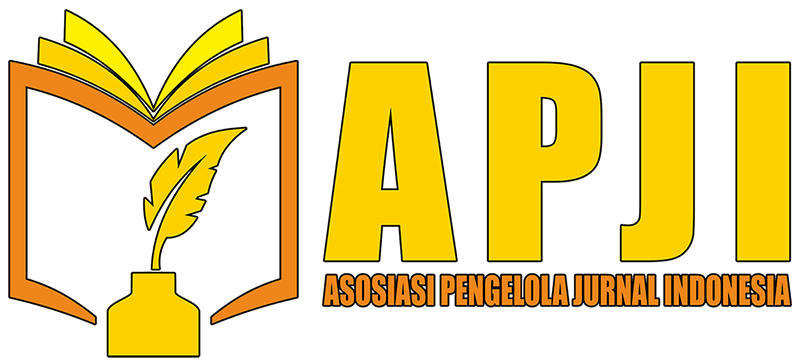Analysis of the Distribution Pattern of Tuberculosis (Pulmonary TB) Patients Using an Autocorrelation Approach
Abstract
Pulmonary Tuberculosis (TB) remains a global health problem with high morbidity and mortality rates. In Padang Panjang City, TB cases increased significantly from 20 cases in 2020 to 126 cases in 2024. This study aims to analyze the spatial distribution patterns of pulmonary TB patients using a spatial autocorrelation approach and to map the vulnerability levels of urban villages based on environmental risk factors. This quantitative descriptive study was conducted in Padang Panjang City from May to July 2025, involving all pulmonary TB patients recorded in the medical records of Padang Panjang General Hospital in 2024. Data were analyzed using Global Moran’s I and Local Indicators of Spatial Association (LISA) with ArcGIS and GeoDa software, as well as overlay analysis of rainfall, population density, altitude, building density, ventilation, and building orientation. The results showed that the overall spatial distribution of TB was random, but the LISA analysis identified spatial outliers in Pasar Baru and Pasar Usang urban villages. Most areas (14 out of 16 villages) were categorized as high-risk zones, mainly influenced by building density and poor ventilation. In conclusion, the spread of pulmonary TB is strongly influenced by environmental factors. Local governments are advised to prioritize interventions in high-risk areas through ventilation improvement, building density control, and community education on air circulation and natural lighting.
Downloads
References
Kementerian Kesehatan RI. Pedoman Nasional Pengendalian Tuberkulosis. Direktorat Jenderal Pencegahan dan Pengendalian Penyakit, Jakarta (2022).
World Health Organization. Global Tuberculosis Report 2023. WHO Press, Geneva (2023).
Centers for Disease Control and Prevention (CDC). Tuberculosis (TB): Transmission and Causes. CDC, Atlanta (2023).
World Health Organization. TB Burden by Country: Global TB Report. WHO, Geneva (2022).
Kementerian Kesehatan RI. Profil Kesehatan Indonesia Tahun 2022. Kemenkes RI, Jakarta (2023).
WHO Global TB Report / indikator World Bank. Impact of the COVID-19 pandemic on tuberculosis control in Indonesia. The Lancet Global Health (2023).
Kementerian Kesehatan RI. Laporan Case Detection Rate (CDR) Tuberkulosis di Indonesia Tahun 2019. Direktorat P2P, Jakarta (2020).
Kustanto, A. The role of socioeconomic and environmental factors on the number of tuberculosis cases in Indonesia. Jurnal Ekonomi Pembangunan 18(2), 129–146 (2020).
Dinas Kesehatan Provinsi Sumatera Barat. Profil Kesehatan Provinsi Sumatera Barat Tahun 2019. Dinkes Sumbar, Padang (2019).
Dinas Kesehatan Provinsi Sumatera Barat. Laporan Tahunan TB Provinsi Sumatera Barat. Dinkes Sumbar, Padang (2019).
Badan Pusat Statistik Kota Padang Panjang. Kota Padang Panjang dalam Angka 2024. BPS, Padang Panjang (2024).
Fadilah Habibul Hamda, Al Asyary, Roma Yuliana, Arinil Haq, Soraya Permata Sujana. “Ecological Studies of Climate Factors and Pulmonary Tuberculosis Cases in Padang City 2020-2023”. 7 (11). 2774-2782. (2024).
Khaerani, N. Hubungan Kondisi Ventilasi Rumah dengan Kejadian TB Paru. Jurnal Kesehatan Lingkungan 9(2), 87–94 (2020).
Ni, I.R.W. & Suniti, W. Faktor Risiko Individu terhadap Kejadian TB Paru di Denpasar. Jurnal Kesehatan Komunitas 5(1), 23–30 (2016).
Farrah Fahdhienie, Tiara Mairani, Phossy Vionica Ramadhana , Saiful Kamal. “Analisis Spasial Kejadian Tuberkulosis di Kota Banda Aceh”. The Indonesian Journal of Health Promotion. 6 (8). 1599-1607. Agustus 2023.
Puspita, S., et al. Spatial Autocorrelation Analysis of Pulmonary Tuberculosis Cases in Central Java Province, Jurnal Biometrika dan Kependudukan 13(1), 90–99 (2024).
Indah Lailatul, Maghfiroh Ziyadatur Rizki. 2024. “faktor risiko lingkungan kejadian tuberkulosis”. Journal of Public Health Innovation (JPHI). 4(02) 476-483.
Aulia, K. T., & Yuniati, S. K. (2024). The Effect of Population Density on The Risk of Tuberculosis in Densely Populated Environments. Journal of Diverse Medical Research, 1(2), 7–12.
Tanka Acharya, Kamal Hamal, Nanda Acharya, Khadga Bikram Shah (2023). “Prevalence of Tuberculosis Among High Altitude Residents of Nepal”. 06(01), 25-29.
Khairani, N., Effendi, S. U., & Izhar, I. (2020). “Hubungan Kepadatan Hunian dan Ventilasi Rumah dengan Kejadian TB Paru pada Pasien Dewasa yang Berkunjung ke Puskesmas Karang Jaya Kabupaten Musi Rawas Utara”. CHMK Health Journal, 4(2), 140 – 148.
Theresia pynkyawati, Akbar Suhardianto, Harry Rachmad Reza, Regitha Nur Syifa. “Desain Ruang Perawatan Tuberkulosis Paru Ditinjau dari Sirkulasi dan Kenyamanan Pengguna Bangunan BBKPM Bandung”. Jurnal Online Institut Teknologi Nasional. Juli 2016.
Copyright (c) 2025 Lastria Kausesra, Endah Purwaningsih

This work is licensed under a Creative Commons Attribution-NonCommercial-NoDerivatives 4.0 International License.
Copyright Notice
Pernyataan Hak Cipta dan Lisensi
Dengan mengirimkan manuskrip ke Jurnal Kesehatan Cendikia Jenius, penulis setuju dengan kebijakan ini. Tidak diperlukan persetujuan dokumen khusus.
Hak Cipta :
Lisensi Creative Commons Atribusi-NonKomersial-BerbagiSerupa 4.0 Internasional
Hak cipta atas artikel apa pun di Jurnal Kesehatan Cendikia Jenius dipegang penuh oleh penulisnya di bawah lisensi Creative Commons CC BY-NC-SA 4.0.
- Hak cipta pada setiap artikel adalah milik penulis.
- Penulis mempertahankan semua hak mereka atas karya yang diterbitkan, tak terbatas pada hak-hak yang diatur dalam laman ini.
- Penulis mengakui bahwa Jurnal Kesehatan Cendikia Jenius sebagai yang pertama kali mempublikasikan dengan lisensi Creative Commons Atribusi 4.0 Internasional (CC BY-NC-SA-4.0).
- Penulis dapat memasukan tulisan secara terpisah, mengatur distribusi non-ekskulif dari naskah yang telah terbit di jurnal ini kedalam versi yang lain (misal: dikirim ke respository institusi penulis, publikasi kedalam buku, dll), dengan mengakui bahwa naskah telah terbit pertama kali pada Jurnal Kesehatan Cendikia Jenius.
- Penulis menjamin bahwa artikel asli, ditulis oleh penulis yang disebutkan, belum pernah dipublikasikan sebelumnya, tidak mengandung pernyataan yang melanggar hukum, tidak melanggar hak orang lain, tunduk pada hak cipta yang secara eksklusif dipegang oleh penulis.
- Jika artikel dipersiapkan bersama oleh lebih dari satu penulis, setiap penulis yang mengirimkan naskah menjamin bahwa dia telah diberi wewenang oleh semua penulis bersama untuk menyetujui hak cipta dan pemberitahuan lisensi (perjanjian) atas nama mereka, dan setuju untuk memberi tahu rekan penulis persyaratan kebijakan ini. Jurnal Kesehatan Cendikia Jenius tidak akan dimintai pertanggungjawaban atas apa pun yang mungkin timbul karena perselisihan internal penulis.
Lisensi :
Jurnal Kesehatan Cendikia Jenius diterbitkan berdasarkan ketentuan Lisensi Creative Commons Atribusi-NonKomersial-BerbagiSerupa 4.0 Internasional (CC BY-NC-SA 4.0). Lisensi ini mengizinkan setiap orang untuk :
Menyalin dan menyebarluaskan kembali materi ini dalam bentuk atau format apapun serta menggubah, memperbaiki, dan membuat ciptaan turunan, bahkan untuk kepentingan komersial, selama mereka mencantumkan kredit kepada Penulis atas ciptaan asli.








